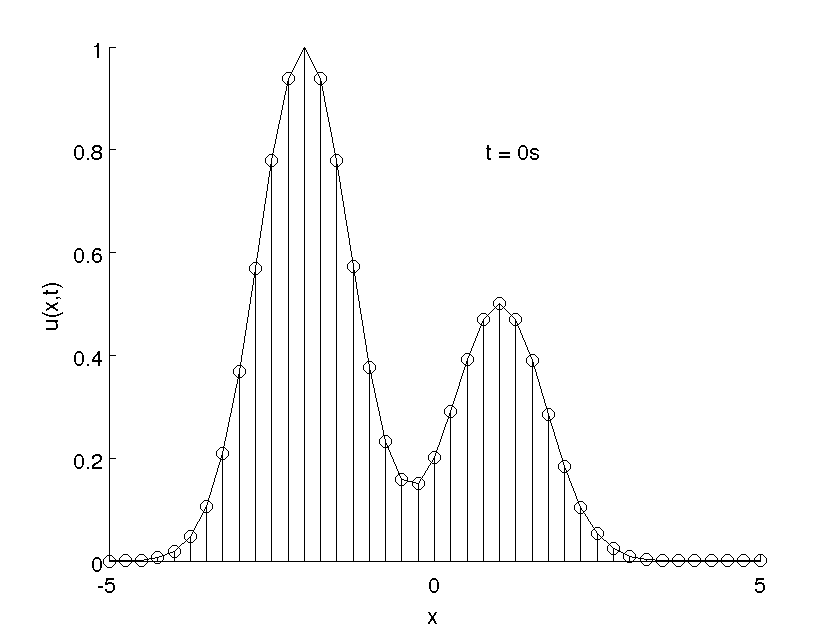Bisection newton hybrid method. Bisection secant hybrid method. etc. How they work, rates of convergence, why they work, hat could go wrong, pros and cons of the various different methods. possible improvements. (own topic)
skang382
In your own words.
-
An appropriate explanation of the key points of the topic (see "Audience" below)
-
Description of methods used to solve the problem
- Algorithms you learned! And perhaps some we didn't have time to go over.
-
When the methods fail and when they do well
- For example, conditioning can play a role here.
-
Examples of edge cases or special cases of the problem.
- For example, solving banded matrices is a "special case" of solving a linear system.
-
Compact pseudocode for key algorithms in the topic you chose
-
Appropriate paper and book references at the bottom of the document. Use APA style.
-
I encourage you to write a report that is a hybrid between a Wikipedia article (a bit more general audience) and a Scholarpedia article (a bit more technical). For example, try:
- Including some history and example applications in your report (Wikipedia-style)
- Including some pseudocode and some degree of neuance via equations (Scholarpedia-style)
- Here are some such examples
- Videos (But
.gifis acceptable! Though do not upload anything that is more than 25MB large. Github will reject it.) - Grammar or spelling errors
- Plagarism. I will check your documents (it's easy to do this, since they will all be plain text). If you plagarize, it will be obvious.
- You are allowed to use external links! You are also encouraged to cite other books and papers (see below for that).
- You are allowed to use HTML within your Markdown document, so long as it renders appropriately within Github. You should check that it does render appropriately by creating a private Github repository for your report and ensuring it works as you expect!
Submit your document formatted as a .zip (if you included images) or .md (if not) to Canvas.
Be sure to create a (private) repository on your own Github profile to make sure that your report shows up as you intended!
Include the following header at the top of your .md file:
---
Name: Your Name
Topic: [Topic Number]
Title: Title of your article
----
Use "Github" flavored markdown, which is a slightly more powerful version of usual markdown. The file extension is usually .md.
You can include equations in usual LaTeX-like way,
You can also include images like this (notice that the image file is in the repository)!
You can also include .gifs!
Pseudocode is included via triple backticks, like this
Pseudocode
Can
Go
Here
and inline code can go like this.
Here are some links for Github-flavored markdown syntax that could be helpful:
- https://github.com/adam-p/markdown-here/wiki/Markdown-Cheatsheet
- https://docs.github.com/en/get-started/writing-on-github/getting-started-with-writing-and-formatting-on-github/basic-writing-and-formatting-syntax
The length of your article is flexible. However, I understand it is useful to put some bounds on things.
Here are some example articles that are too short
- http://www.scholarpedia.org/article/Fixed_point
- http://www.scholarpedia.org/article/Normal_forms
- https://en.wikipedia.org/wiki/Numerical_method
Here is one that is probably too long for this project, though I will certainly not mark you down if you write something this comprehensive!
Write your article such that it could be understood by a student who is about to take this course, but hasn't started yet (you just a few months ago!). For example, here is one that is presented in a way that is too complex for your mock audience.
From the topics.md document:
Some of these topics may be easier or harder to write about depending on at what length they were discussed in class. This will be taken into account while grading, with somewhat fewer details and less depth expected for more complex or well-discussed topics.
-
60% Technical correctness and completeness. Get full points here by
- Not saying things that are technically incorrect.
- Completeness is a bit nebulus here. You do not need to include everything you could possibly discuss about your topic (that could be an entire textbook in some cases!). Instead, include a combination of breadth and depth that is in line with some of the Wikipedia/Scholarpedia examples provided.
- In many cases you should include some equations and pseudocode to explain your topic, though there are a few exceptions to this.
- Not mentioning a method that is critical to your topic could result in deducted points, especially if that topic was discussed at length in class.
-
20% Clarity. Get full points here by
- Not including topics that are irrelevant to yours (at least not without explanation of why they are there!).
- Do include reference to topics, via links and proper references, that are relevant to yours.
- Use hyperlinks to navigate around your document (for example, like this).
- Make your document intellectually accesssible to your mock audience (discussed above).
- No non sequiturs.
- Use proper English grammar.
- No spelling mistakes.
-
10% Presentation. Get full points here by
- Using high quality graphics (if you use graphics).
- Consistent style.
- Proper use of tables, figures, lists (bulleted and numerated), etc.
- Make it something you would be proud to show to your colleagues!
-
10% Organization. Get full points here by
- Separate and organize sections and subsections appropriately.
- Include a table of contents
- References and URL refs. in an appropriate location.
- References
- Can
- Go
- Here
- Like
- This
- Bryngelson, S. H., & Freund, J. B. (2018). Global stability of flowing red blood cell trains. Physical Review Fluids, 3(7). https://doi.org/10.1103/physrevfluids.3.073101

